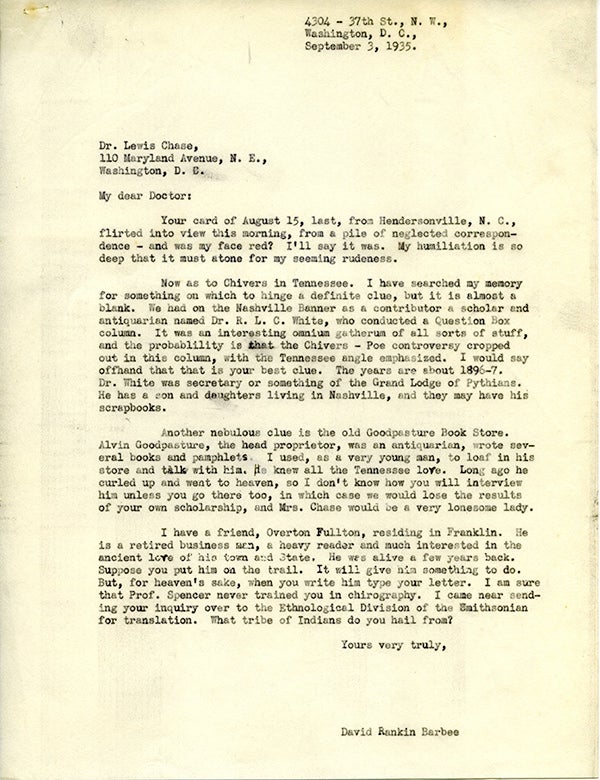Paleography, the study and interpretation of ancient or historical handwriting, is a skill often required when doing historical research in an archive. More and more these days, as handwriting is replaced by typing, even the reading of modern handwriting can become an obstacle—due to the quality of the writing as much as to the historical forms it takes. Many people today have difficulty reading cursive forms of writing since most of what is read today is in the form of printed block letters; this is the reason why forms generally instruct us to "please print."
We shouldn’t feel too bad about this difficulty, though, because it is far from new. Throughout the modern period, as handwriting became common in an increasingly literate population and the letterforms of professional scribes disappeared, people had to deal with reading bad handwriting. No wonder the typewriter was such a success before the digital age!
One of my favorite letters in the collections at the Booth Family Center well illustrates this point; I stumbled across the letter in the David Rankin Barbee papers while assisting a researcher, and it never fails to make me smile. The letter was written by Rankin Barbee in response to a postcard from Mr. Lewis Chase, who had a question about some point of Tennessee history for Barbee, a native Tennessean, historian, and an inveterate and gifted writer of letters. Given the amount of writing that Barbee did, as a journalist, a PR man, a historian, and as a correspondent, it is no surprise that most of it was accomplished with a typewriter.

At first glance (and second, third, and so on…) Chase’s postcard might appear to be illegible, but Barbee’s reply would indicate that he was at least able to make out enough to get the gist of it. Well, I can confirm that Chase’s postcard is not unreadable—I have read it. I would transcribe it here as proof, but that would ruin the fun of trying for oneself (and it would simply take too long).

There are several things I love about Rankin’s letter, including his horror at only responding after more than two weeks and his description of the bookseller who "curled up and went to heaven." Above all, though, is his humorous and (somewhat) gentle response to Chase’s handwriting, down to the oblique reference to Spencerian script which was the standard for American business writing before the typewriter, still seen today in the logo for Coca-Cola.
--Ted Jackson, Manuscripts Archivist
September 25, 2017
